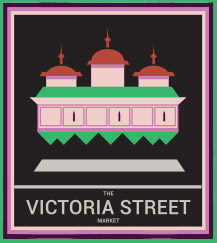What were their sentiments, motivations, values and activities?
Around this time an open air street market was developed by the Durban City Council in Victoria Street extending from Grey Street to Brooke Street and the corner of Cemetery Lane. This market was the trading hub for around 2000 sellers whom majority were market gardeners that lined both ends of the street in carts selling mainly staple vegetables in baskets and barrows. These traders used to arrive each evening around 20:00pm and spent the night sleeping under their carts before trading began at 04:003m the next day.
According to the trading restrictions from the Council, trading ceased at 09:00 on weekdays and 10:30 on Saturdays. 30 minutes later a municipal water cart moved down the street to wash it down. This market came to be known as the ”Squatters Market” as many traders squatted cross-legged in the street alongside their goods. Grey street developed into an established Indian business district but the white people saw the traders as a public nuisance as the streets were covered in rotting vegetables and leaves and schism developed between the Hindu and Muslim farmers which resulted in the Hindu group organising a Market Committee to meet with the council to request a separate market for their exclusive use. This resulted in the city council moving the squatters market to Warwick Avenue as the Council considered the market a lucrative industry to the economy of Natal. The Warwick early morning market was therefore established on the 1St February 1934, while the original Victoria Street Market, better known as the Indian Market, or the Stallholders’ Market, became an outlet for more diversified goods.
At around the same time the Council reconsidered the location of the Borough Market in the central CBD as its facilities, over time, had become congested and the availability of a railway siding in Berea Road Station had made the relocation more suitable, as a result a new bulk sales hall was opened south of the early morning market on the 1‘t October 1935. This tine brick building stood in stark contrast to the Early Morning Market, which was housed in a rudimentary, open-sided structure with concrete tables and few amenities. Access to the area was originally limited to a bridge which crossed over the railway line at Theatre Road, and was probably built before 1910, but this was improved in about 1931 with the construction a road bridge over the railway line at Victoria Street, and the development of a boulevard in 1933 linking Warwick to Old Dutch Road.


Recent Comments